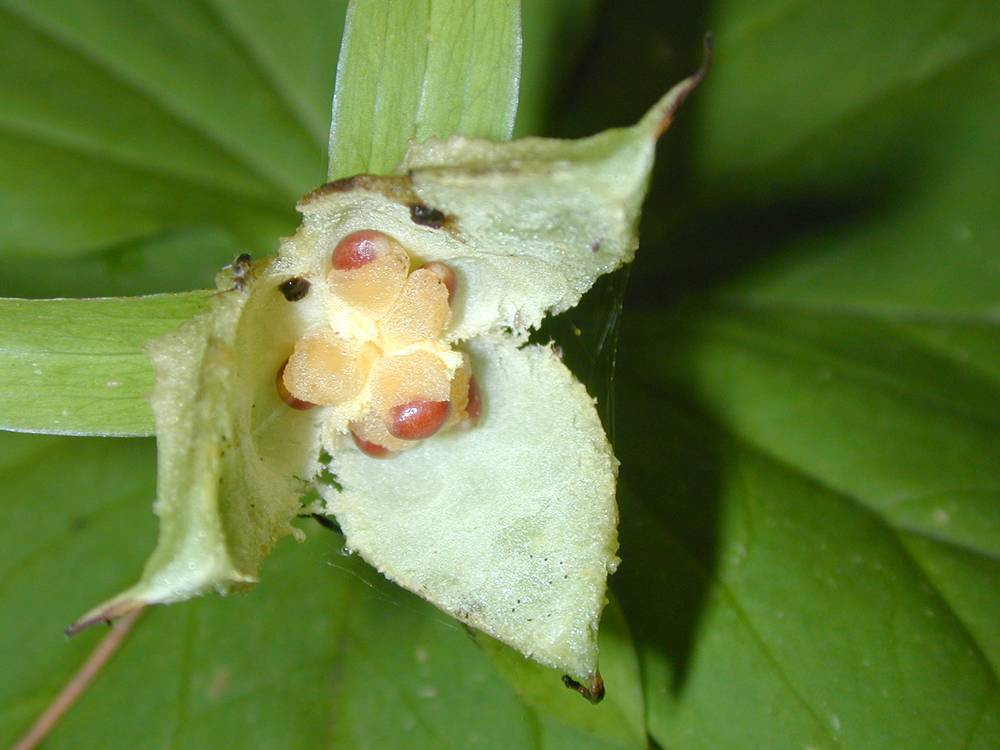Trillium foetidissimum
Trillium
trillium, wakerobin
adventitious, contractile, ringed.
short; thick, tapered to a point.
3; in a whorl subtending flower, sessile or petiolate; ovate to cordate; major veins 3–5;
venation palmate-reticulate.
1-several; erect; straight; round, usually aerial (below ground in T. petiolatum).
terminal, 1 per stem.
bisexual;
sepals 3; ovate or obovate to elliptical, green (sometimes with maroon markings); free, alternating with leaves; leaf-like, persistent;
petals 3; ovate to linear, white, pink, yellow; maroon, or purple; free, spreading or recurved, sometimes clawed, withering with age;
stamens 6, alternating in 2 whorls; erect, recurved or divergent;
filaments wider at base;
anthers white or purple;
ovary superior;
stigmas 3, linear to awl-shaped, spreading, twisted, or erect, usually persistent.
berry-like capsules, 0.5–3 cm long; fleshy.
many; ovoid to elliptical, 2–4 mm, with a large white or yellowish oil body (elaiosome); ant dispersed.
=10.
Trillium foetidissimum
Trillium
North America, Asia. 43 species; 5 species in Oregon.
Tamra Prior


